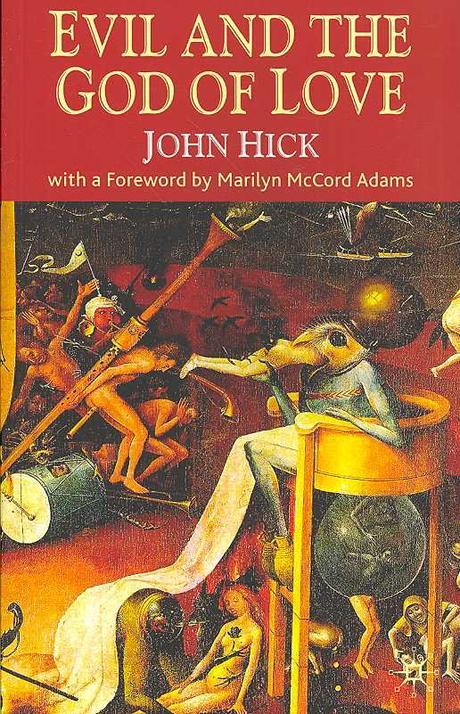본문
Powered by NAVER OpenAPI
-

-
Evil and the God of Love Paperback
저자 : Hick, John
출판사 : Palgrave Macmillan
출판년 : 2007
ISBN : 9780230522008
책소개
When first published, Evil and the God of Love instantly became recognized as a modern theological classic, widely viewed as the most important work on the problem of evil to appear in English for more than a generation. It has continued to be at the center of discussions ever since. Alongside a new preface by the author, this reissue of the work includes a foreword by Marilyn McCord Adams.
[교보문고에서 제공한 정보입니다.]
목차정보
Preface to the First Editionp. xPreface to the Second Editionp. xiiPreface to the 1985 Reissuep. xivPreface to the 2007 Reissuep. xviForewordp. xviiiList of Abbrevationsp. xxiiiIntroductoryThe Problem and its TermsDefining the problemp. 3Is theodicy permissible?p. 6The kinds of evilp. 12The Two Poles of Thought - Monism and DualismMonism and Dualismp. 15The pure monism of Spinozap. 17A contemporary view of evil as illusion - Christian Sciencep. 23Plato's dualismp. 25The external dualism of J. S. Millp. 27The internal dualism of E. S. Brightmanp. 30The Augustinian Type of TheodicyThe Fountainhead: St. Augustine - Evil as privation of good stemming from misused freedomEvil as privatio boniAugustine and Manichaeismp. 38The Plotinian theodicyp. 40The goodness of the created orderp. 43Man mutable because 'made out of nothing'p. 46Evil privative and parasiticp. 47The identity of being and goodnessp. 49The logical character of Augustine's doctrinep. 53"The Free-Will Defence' in St. AugustineSin as the basic evilp. 59The self-creation of evil 'ex nihilo'p. 62Sin and predestinationp. 64The Fountainhead: St. Augustine - The principle of plenitude and the aesthetic themeThe principle of plenitudeThe Problemp. 70Augustine's Neo-Platonist answerp. 72The principle of plenitude in Plotinusp. 75Emanation and creationp. 76The pre-existing patternp. 79The aesthetic themeThe aesthetic theme in Augustinep. 82Animal pain in a perfect worldp. 85Hell and the principle of moral balancep. 87Catholic Thought from Augustine to the Present DayAugustine's theodicy writ large: Hugh of St. Victorp. 90Thomas Aquinasp. 93A contemporary Thomist presentation: Charles Journetp. 98Journet on sin and hellp. 107The Problem of Evil in Reformed ThoughtAugustine and the Reformersp. 115CalvinFall and predestination in Calvinp. 117Predestination versus theodicyp. 121Karl BarthBarth's methodp. 126The 'shadowside' of creationp. 128'Das Nichtige'p. 130The origin of 'das Nichtige'p. 133Criticism: (a) the origin of 'das Nichtige'p. 135Criticism: (b) the status of 'das Nichtige'p. 137Eighteenth-Century 'Optimism'A product of the Augustinian traditionp. 145King's 'Origin of Evil'p. 148Leibniz's 'Theodicy'p. 154The 'best possible world'p. 160'Best possible' - for what purpose?p. 167Dividing the Light from the DarknessThe main features of the Augustinian type of theodicyp. 169The theological themesThe goodness of the created universep. 170Human suffering as a punishment for sinp. 172'O felix culpa...' versus eternal tormentp. 176The philosophical themesEvil as non-beingp. 179Metaphysical evil as fundamentalp. 187The aesthetic perfection of the universep. 191A basic criticismp. 193The Irenaean Type of TheodicySin and the Fall according to the Hellenistic FathersThe biblical basis of the fall doctrinep. 201From Paul to Augustinep. 205The beginning's of the Hellenistic point of viewp. 208Irenaeusp. 211Eastern Christianityp. 215The Irenaean Type of Theodicy in SchleiermacherSchleiermacher on 'original perfection'p. 220Schleiermacher's account of sinp. 222The relation between sin and sufferingp. 226God as ultimately ordaining sin and sufferingp. 228Schleiermacher and the instrumental view of evilp. 231Man's beginning and endp. 234The Two Theodicies - Contrasts and AgreementsThe contrast between the two types of theodicyp. 236Points of hidden agreementp. 238A Theodicy for TodayThe Starting-PointThe negative task of theodicyp. 243The traditional theodicy based upon Christian mythp. 245The 'vale of soul-making' theodicyp. 253Moral EvilThe shape of sinp. 262The traditional free-will defencep. 265The recent critique of the free-will defencep. 266Divine-human personal relationshipp. 271Freedom as limited creativityp. 275The virtual inevitability of the fallp. 277Man created as a fallen beingp. 280PainPain and sufferingp. 292Physical Painp. 294Has pain a biological value?p. 297Pain and the structure of the worldp. 304Animal painp. 309SufferingSuffering as a function of meaningp. 318Pain as a cause of sufferingp. 319A paradise without suffering?p. 322Excessive or dysteleological sufferingp. 327The traditional answer: nature preverted by fallen angelsp. 331Soul-making and mysteryp. 333The Kingdom of God and the Will of GodThe infinite future goodp. 337Theodicy versus hellp. 341The intermediate statep. 345Some residual problemsp. 350The biblical paradox of evilp. 352Its source in the duality of the Christian lifep. 357Its eschatological resolutionp. 362Recent Work on the Problem of Evilp. 365Indexp. 387Table of Contents provided by Ingram. All Rights Reserved.
[교보문고에서 제공한 정보입니다.]